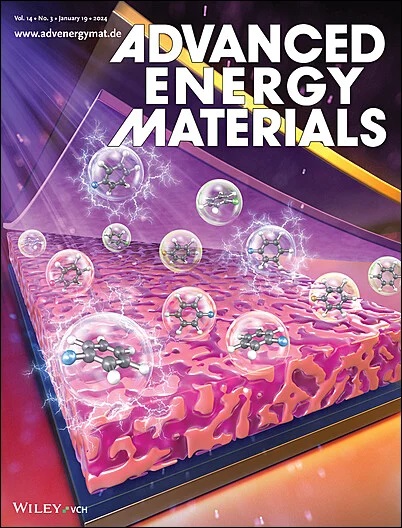用于太阳能燃料生产的可扩展和集成光催化反应器系统:光氧化还原和光重整过程
IF 24.4
1区 材料科学
Q1 CHEMISTRY, PHYSICAL
引用次数: 0
摘要
过度的人类活动导致了一系列的环境和能源问题,如全球变暖和能源短缺。这些问题引起了社会的关注,寻求替代方案来修复环境污染,实现低碳社会。光催化(PC)、光电化学(PEC)和光重整(PR)工艺被认为是有前途的技术,它们提供了回收塑料废物、水和二氧化碳(CO2)的机会,通过使用光响应半导体将它们转化为清洁的氢(H2)、碳中性甲烷(CH4)、绿色甲醇(CH3OH)和其他燃料。近几十年来,人们一直致力于探索具有理想光电和电子能带结构的光活性催化剂,通过改善光吸收、促进电荷转移和抑制电荷载流子重组来有效催化此类反应,从而增强pc、PECs和pr的催化作用。然而,人们对光催化反应系统或反应器的先进设计的关注有限,而光催化反应系统或反应器对于将整体太阳能转换性能提升到工业规模至关重要。本文综述了结构工程策略的最新进展以及设计高效的大规模光驱动催化系统所面临的挑战。详细地讨论了影响太阳能-燃料转换性能的操作参数,包括反应物的性质、光捕获能力、光反应器的几何形状、工作模式和相位。讨论了工业规模应用的光催化反应的安全性和标准化问题。最后,展望了构建商业化PC、PEC和PR光反应器原型的挑战和前景,这些原型可以成为工业上可行的技术。本文章由计算机程序翻译,如有差异,请以英文原文为准。

Scalable and Integrated Photocatalytic Reactor Systems for Solar-to-Fuel Production: Photoredox and Photoreforming Processes
Excessive human activities have led to a series of environmental and energy issues, such as global warming and energy shortages. These issues have drawn the attention of society to seek alternatives to remediate environmental pollution and achieve a low-carbon society. Photocatalytic (PC), photoelectrochemical (PEC), and photoreforming (PR) processes are considered promising technologies that offer the opportunity to recycle plastic waste, water, and carbon dioxide (CO2), transforming them into clean hydrogen (H2), carbon-neutral methane (CH4), green methanol (CH3OH) and other fuels by using light-responsive semiconductors. In recent decades, intensive research has been devoted to exploring photoactive catalysts with ideal optoelectronic and electronic band structures that can effectively catalyze such reactions by improving light absorption, promoting charge transfer and suppressing charge carrier recombination for catalytic enhancement in PCs, PECs, and PRs. However, limited attention has been focused on the advanced design of photocatalytic reaction systems or reactors, which is critically vital for upscaling the overall solar energy conversion performance to an industrial scale. This review summarizes the recent advancements in structural engineering strategies and challenges in designing efficient large-scale light-driven catalytic systems. In detail, the operational parameters, including the nature of the reactant, light capture ability, photoreactor geometry, operating mode, and phases, that affect the solar-to-fuel conversion performance are discussed. The safety concerns and standardization of the photocatalytic reaction for industrial-scale applications are also discussed. Finally, perspectives on the challenges and outlook in constructing commercialized PC, PEC, and PR photoreactor prototypes are provided that can become industrially viable technologies.
求助全文
通过发布文献求助,成功后即可免费获取论文全文。
去求助
来源期刊

Advanced Energy Materials
CHEMISTRY, PHYSICAL-ENERGY & FUELS
CiteScore
41.90
自引率
4.00%
发文量
889
审稿时长
1.4 months
期刊介绍:
Established in 2011, Advanced Energy Materials is an international, interdisciplinary, English-language journal that focuses on materials used in energy harvesting, conversion, and storage. It is regarded as a top-quality journal alongside Advanced Materials, Advanced Functional Materials, and Small.
With a 2022 Impact Factor of 27.8, Advanced Energy Materials is considered a prime source for the best energy-related research. The journal covers a wide range of topics in energy-related research, including organic and inorganic photovoltaics, batteries and supercapacitors, fuel cells, hydrogen generation and storage, thermoelectrics, water splitting and photocatalysis, solar fuels and thermosolar power, magnetocalorics, and piezoelectronics.
The readership of Advanced Energy Materials includes materials scientists, chemists, physicists, and engineers in both academia and industry. The journal is indexed in various databases and collections, such as Advanced Technologies & Aerospace Database, FIZ Karlsruhe, INSPEC (IET), Science Citation Index Expanded, Technology Collection, and Web of Science, among others.
 求助内容:
求助内容: 应助结果提醒方式:
应助结果提醒方式:


